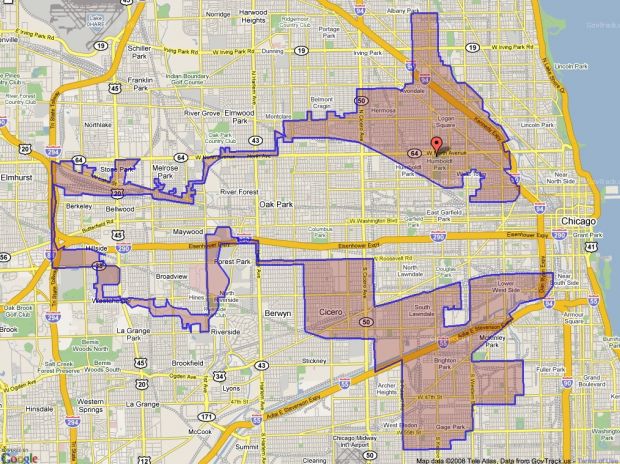A few weeks ago, I posted here on how Hungary’s electoral system works and why it was changed in 2011.
One of the big changes, of course, included the re-drawing of the electoral districts. That keeps popping up because critics charge that the districts have been gerrymandered making the whole system unfair.
The gerrymandering charge has always been a flimsy argument, and I want to give you two reasons why:
The districts were re-drawn according to firm guidelines. The new law of course required that the electoral districts – reduced to 106 from 176 under the previous system – be roughly equally in size in terms of the number of voters. In the new system, one MP represents on average 76,000 voters. But the law also required that the constituencies form a coherent area, that they not cross over boundaries of the counties or of the border of the Budapest municipality.
Have a look at the map of Hungary’s electoral districts (pictured above).
By contrast, have a look at this map of the 4th district in the state of Illinois:

That’s what most would consider gerrymandering.
Secondly, if you’re going to gerrymander an electoral district, you need to have reliable voting histories, preferably long voting histories. That means, for example, you have to know with some certainty which way a certain precinct tends to vote. Some countries have been holding democratic elections for decades, even centuries, where the contest pits political parties (or at least voting groups) that have been around for a good, long while. In those countries, it’s a simpler task to draw a district in a way that favors one side or another. In a young democracy like Hungary, where we’ve seen political parties come and go and held only seven parliamentary elections, it’s not so easy.
To illustrate my point, I offer this animated map recently published on the news site Index
The map shows the counties of Hungary, and the animation shows which party won which counties in the parliamentary elections every four years since 1990. Clearly, we’ve seen a lot of change in the direction of the vote in these counties. As the Index reporter writes, in one particular county, for example, it changed color five times over the seven elections.
That’s why when someone claims that the Hungarian system has been gerrymandered, I always ask them to show me a specific example.
For more on the Constitutional Court decision in 2005 that required that the districts be redrawn, see my previous post here.
